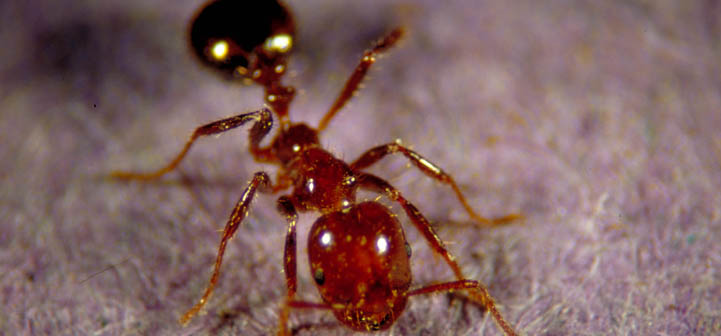Home > How to Kill Fire Ants > Fire Ant Biology

Ant developmental stages
Fire Ant Habitat
Imported fire ants, Solenopsis invicta and Solenopsis richteri (Hymenoptera: Formicidae), are social insects that usually produce hills or mounds in open areas where the colonies reside. These fire ants build mounds in almost any type of soil, but prefer open, sunny areas such as meadows, pastures, parks, playgrounds, lawns, and golf courses, as well as agricultural land and wilderness areas.
Read more >>
What Do Fire Ants Eat?
Imported fire ants are omnivores. They eat both plants and animals to satisfy their nutritional requirements. Their menu includes carbohydrates(sugars), lipids (fats) and protein. Worker ants cannot ingest solid food particles (greater than 2 microns, 1 micron = 0.000039 of an inch), so they primarily feed on liquids.
Read more >>
Fire Ant Morphology, Reproduction, and Development
If it weren’t for the painful experiences associated with fire ants, most people might find these creatures fascinating. Their life cycle and social behavior are surprisingly complex. This article explores how a fire ant colony becomes a colony, the different types of fire ants in a colony and the roles they play within the colony, as well as their communal feeding system.
Read more >>
Identifying Fire Ants
Properly identifying ant species is the first step in determining the need and approach for control. Accurate identification can be especially important in states where native fire ant species are common and red imported fire ants are rare. Although native fire ants are common urban pests, if they are controlled unnecessarily, especially in very dry climates, imported fire ants are more likely to invade these areas. This article explores the characteristics and aggressive nature of fire ants.
Read more >>
Natural Enemies of Fire Ants
Biological control is the use of imported natural enemies to suppress pests and can be an effective and environmentally safe way to permanently control pests over wide areas. As such, it is the basis for many integrated pest management programs. In South America, the native habitat for imported fire ants, populations are much lower than populations in areas where imported fire ants have been accidentally introduced, such as the southern U.S. This situation is thought to arise because natural enemies (predators, parasites and pathogens) that keep populations low in South America were not imported along with this ant. Efforts have been made to introduce natural enemies to the invasive ant populations in order to provide sustainable suppression.
Read more >>
